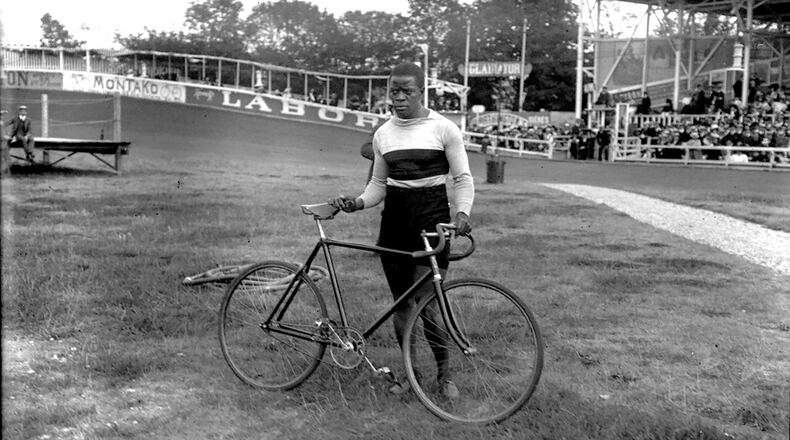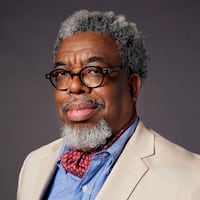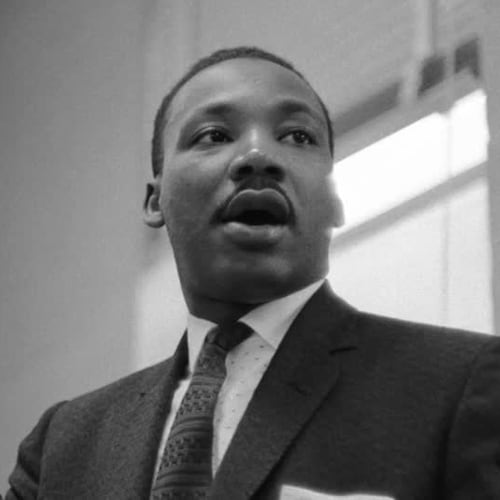This story was originally published in 2022. For our complete Black History Month coverage, click here.
It was the winter of 1898 and Major Taylor, the country’s most ballyhooed cyclist, had just arrived from his home in Massachusetts to the warmer climes of Savannah to train for the upcoming season.
Trouble greeted him. The owners of the training facility didn’t know Taylor was Black, so they barred him on arrival. So he hit the streets. According to several accounts, he rode upon three white cyclists who were training along the isolated Savannah roads and asked if he could follow.
Credit: NY Public Library Public Colletions
Credit: NY Public Library Public Colletions
Using a racial epithet that was common at the time, and still used, they rebuffed him. Taylor, already regarded as the fastest cyclist in the world, rode past them. They chased him through Savannah.
They never caught him. But when he arrived back to his room, a note ―chilling in its formality― was under his door.
“Dear Mr. Taylor, If you don’t leave here before 48 hours you will be sorry. We mean business. Clear out if you value your life. Signed, White Riders.”
A year earlier, after a race in Massachusetts, Taylor was tackled on the track and choked unconscious by a rival cyclist in front of more than 20,000 people.
That was Taylor’s life.
Hated in the United States.
Adored abroad.
Dominant on every velodrome.
“People say that he was the Jackie Robinson of cycling,” said veteran cyclist Iilonga Thandiwe. “But that should be reversed. Major Taylor came first.”
Between 1896 and around 1910, before Jack Johnson, Jesse Owens, Jackie Robinson and Joe Louis, there was Major Taylor, the first authentic and recognized Black sports superstar in America.
Taylor, who did not drink or smoke or chase women, was one of the richest athletes of his day and the most dominant athlete in one of America’s biggest sports―cycling.
Two decades before Babe Ruth signed his astronomical $20,000 contract for the New York Yankees in 1920, Taylor was turning down $20,000 paydays in Europe because of his religious beliefs he refused to race on Sundays.
“He is the most unrecognized superstar athlete who has ever lived,” said Terry Kerber, who along with his brother Conrad Kerber, co-wrote, “Major Taylor: The Inspiring Story of a Black Cyclist and the Men Who Helped Him Achieve Worldwide Fame,” in 2014.
Credit: Gray Quetti
Credit: Gray Quetti
While cycling was a major sport in the late 1800s, it soon gave way to horse racing, boxing and baseball, which held its first World Series in 1903.
“With the decline of cycling, he just got lost in history,” Thandiwe said.
Marshall Walter Taylor was born in Indianapolis in 1878. Taylor’s father, a Civil War veteran, got a job as a coachman for a wealthy white family, who gave Taylor his first bike.
He became an expert trick rider and was hired by the owner of a bike shop to teach riding and to do tricks on the street to draw in business. He wore a military outfit and was dubbed “Major.”
Taylor, at age of 12, won his first race, a 10-mile amateur event, in 1890. He turned professional in 1896 and emerged as the “most formidable racer in America.”
Taylor would set or break several time records and win several national championships. In 1899, he won the world championship in Montreal, becoming the first African-American to win a world championship in cycling.
Credit: National Library of France
Credit: National Library of France
But his success came with problems and violence. In his autobiography, the tongue-twisting, “The Fastest Bicycle Rider in the World: The Story of a Colored Boy’s Indomitable Courage and Success Against Great Odds: An Autobiography,” Taylor wrote that during races, people would throw ice water on him and scatter nails along his path. White riders would also elbow, or “pocket” (box in) him, to prevent him from sprinting to the front of the pack.
“His life was two extremes. One where he was feted in other countries and the other, where he had a hard time getting a seat in a restaurant in America,” Kerber said. “I would think he was always somewhere between elation and depression.”
After he retired, Taylor fell on hard times. His health declined and a series of bad investments left him so broke, that he had to sell the family heirlooms to buy food. In 1930, his wife Daisy and daughter Sydney left him. He never saw them again.
He spent his final two years living in a Chicago YMCA before he died in 1932 at the age of 53, unrecognized and unclaimed, buried in a pauper’s grave.
In 1948, a group of former professional racers, using funds donated by Frank Schwinn of the Schwinn Bicycle Company, exhumed and reburied Taylor.
His plaque reads: “World’s champion bicycle racer who came up the hard way without hatred in his heart, an honest, courageous and God-fearing, clean-living gentlemanly athlete. A credit to his race who always gave out his best. Gone but not forgotten.”
But he was. Until at least 1982 when Indianapolis opened the Major Taylor Velodrome in his honor, and in 2008 when his adopted hometown of Worcester, Mass., unveiled a quarter-million-dollar, state-funded memorial.
Credit: Paul F. Henegan
Credit: Paul F. Henegan
The Major Taylor Association has also developed a curriculum for the cyclist, but Thandiwe, a 66-year-old triathlete, who has been riding with the Metro Atlanta Cycling Club for 15 years is trying to do more.
Today, there are dozens, if not hundreds of Black cycling clubs, many of them carrying Taylor’s name, across the country.
Credit: Courtesy Iilonga Thandiwe
Credit: Courtesy Iilonga Thandiwe
Taylor’s image is on the MACC racing kits and every November, around the legend’s birthday, they hold a major ride in his honor. The club, the oldest Black club in the Southeast, also makes presentations at local schools about Taylor’s life.
“We understand is that while Major Taylor is only marginally well-known inside the cycling community, he is completely unknown outside of it,” Thandiwe said. “Now, we have to take ownership of his legacy, because we have not done a good job in protecting it.”
About the Author
The Latest
Featured








